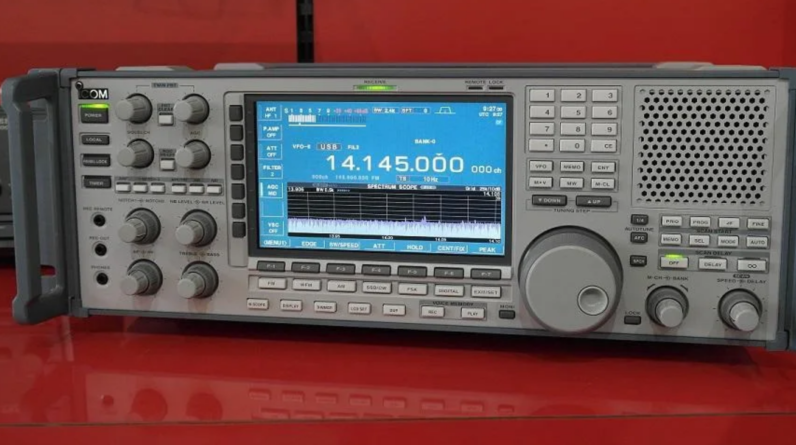
Communications Receivers
In radio communications, a radio receiver, also known as a receiver, a wireless, or simply a radio, is an electronic device that receives radio waves and converts the information carried by them to a usable form. In most cases an radio receiver is used with an antenna. The antenna intercepts radio waves (electromagnetic waves of (RF) radio frequency) and converts them to tiny alternating currents which are applied to the receiver, and the receiver extracts the desired information. The receiver uses electronic filters to separate the desired radio frequency signal from all the other signals picked up by the antenna, an electronic amplifier to increase the power of the signal for further processing, and finally recovers the desired information through demodulation.
Radio receivers are essential components of all systems that use radio. The information produced by the receiver may be in the form of sound, video (television), or digital data. A radio receiver may be a separate piece of electronic equipment, or an electronic circuit within another device. The most familiar type of radio receiver for most people is a broadcast radio receiver, which reproduces sound transmitted by radio broadcasting stations, historically the first mass-market radio application. A broadcast receiver is commonly called a “radio”. However radio receivers are very widely used in other areas of modern technology, in televisions, cell phones, wireless modems, radio clocks and other components of communications, remote control, and wireless networking systems.
Radio Frequency (RF) Receivers are as old as radio itself. After all, radio signals had to be intercepted and converted into an intelligible form to be useful. At first the signals transmitted and received were Morse code (radio telegraphy). Fittings aboard ships were mandatory in the first decade of the 20th century (1900’s). But hours of watch were not prescribed.
The Titanic disaster (1912) changed that. A ship was an hour away but did not hear the Titanic’s distress call. A ship that did hear the distress call was more then three hours away, but rushed to the scene. By then, the titanic had sunk with great loss of life.
Voice transmissions (radio telephony) came into use in the 1920’s. A frequency was set apart for calling and distress. Quiet times were prescribed to enable listening for distress calls.

